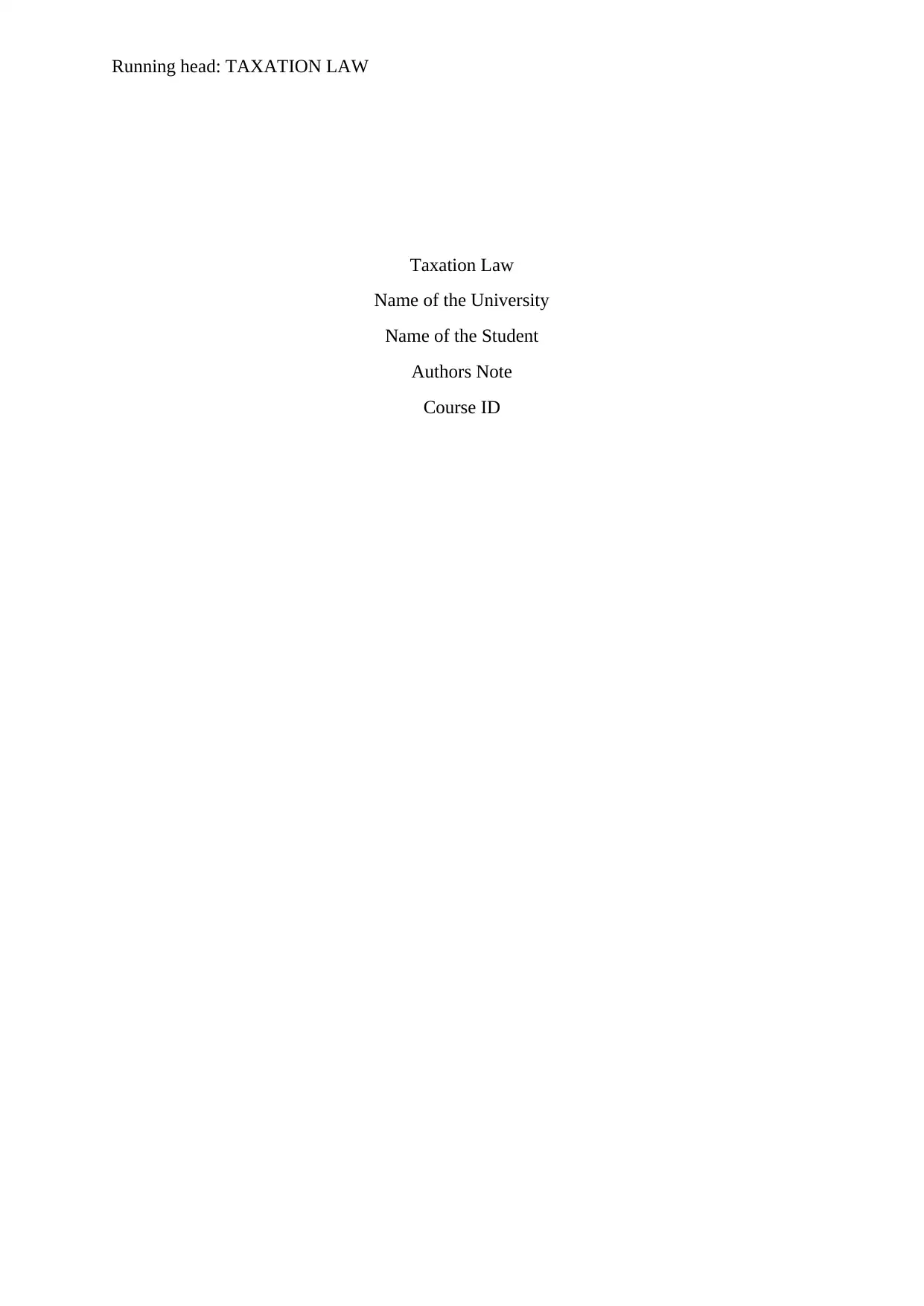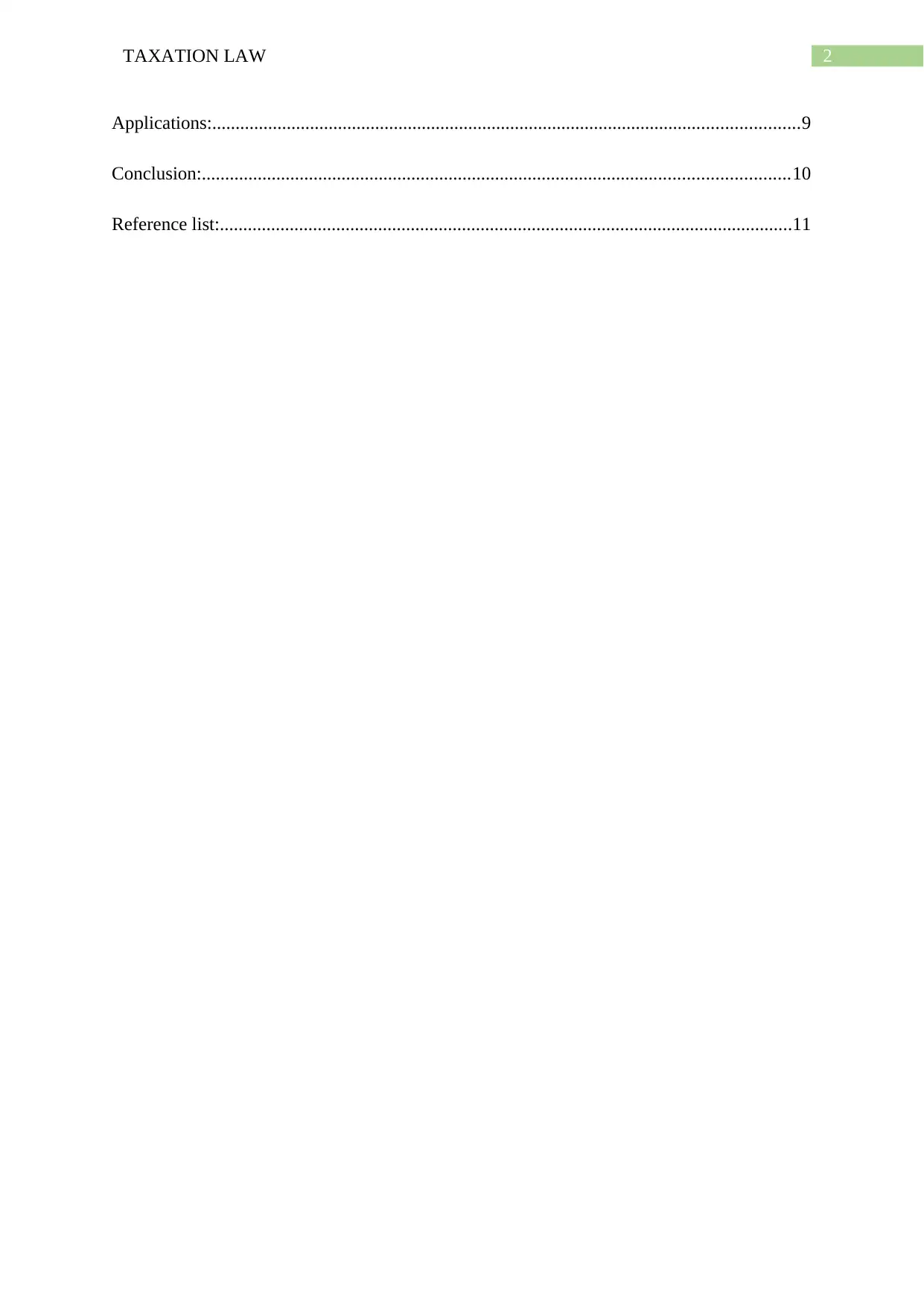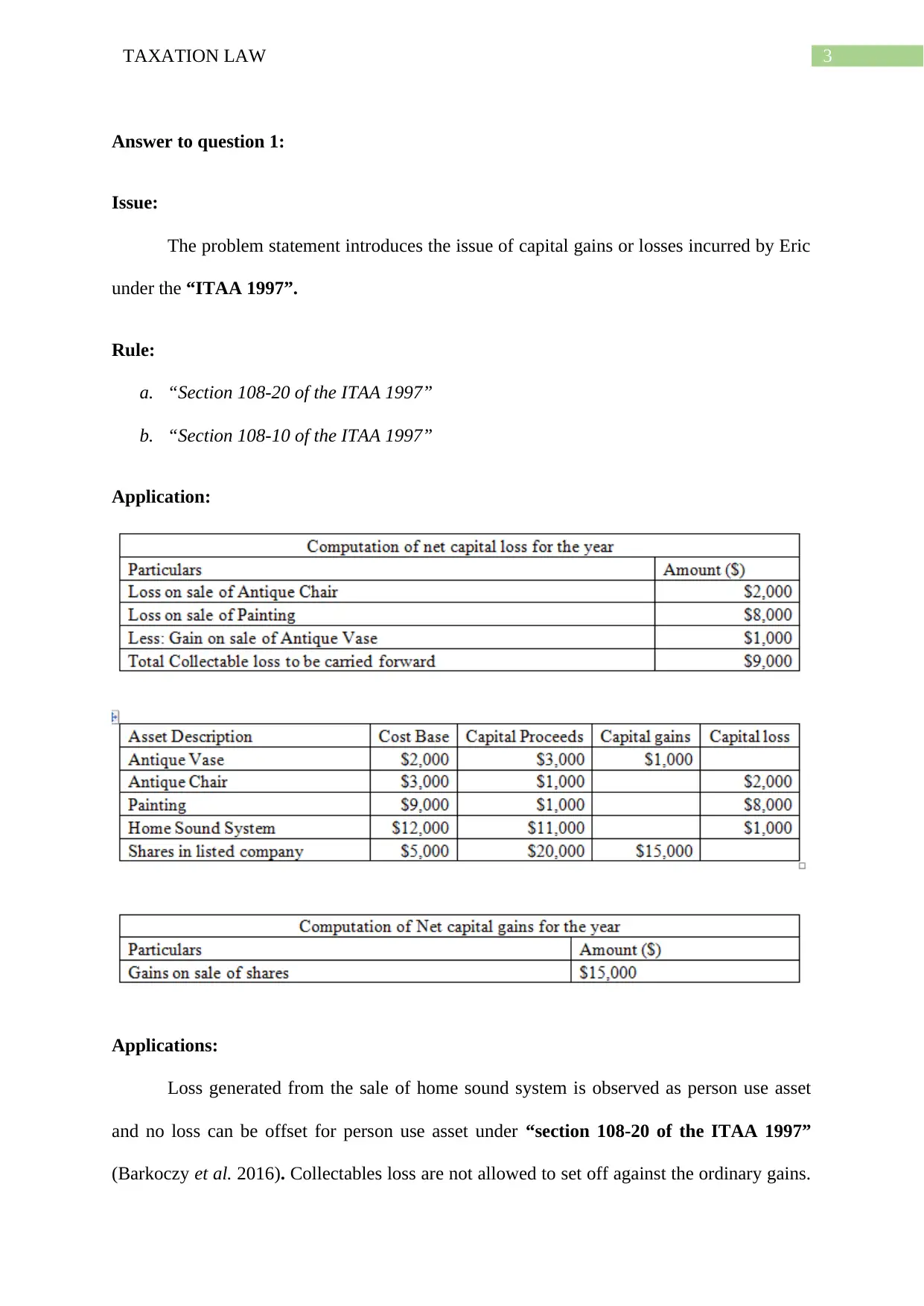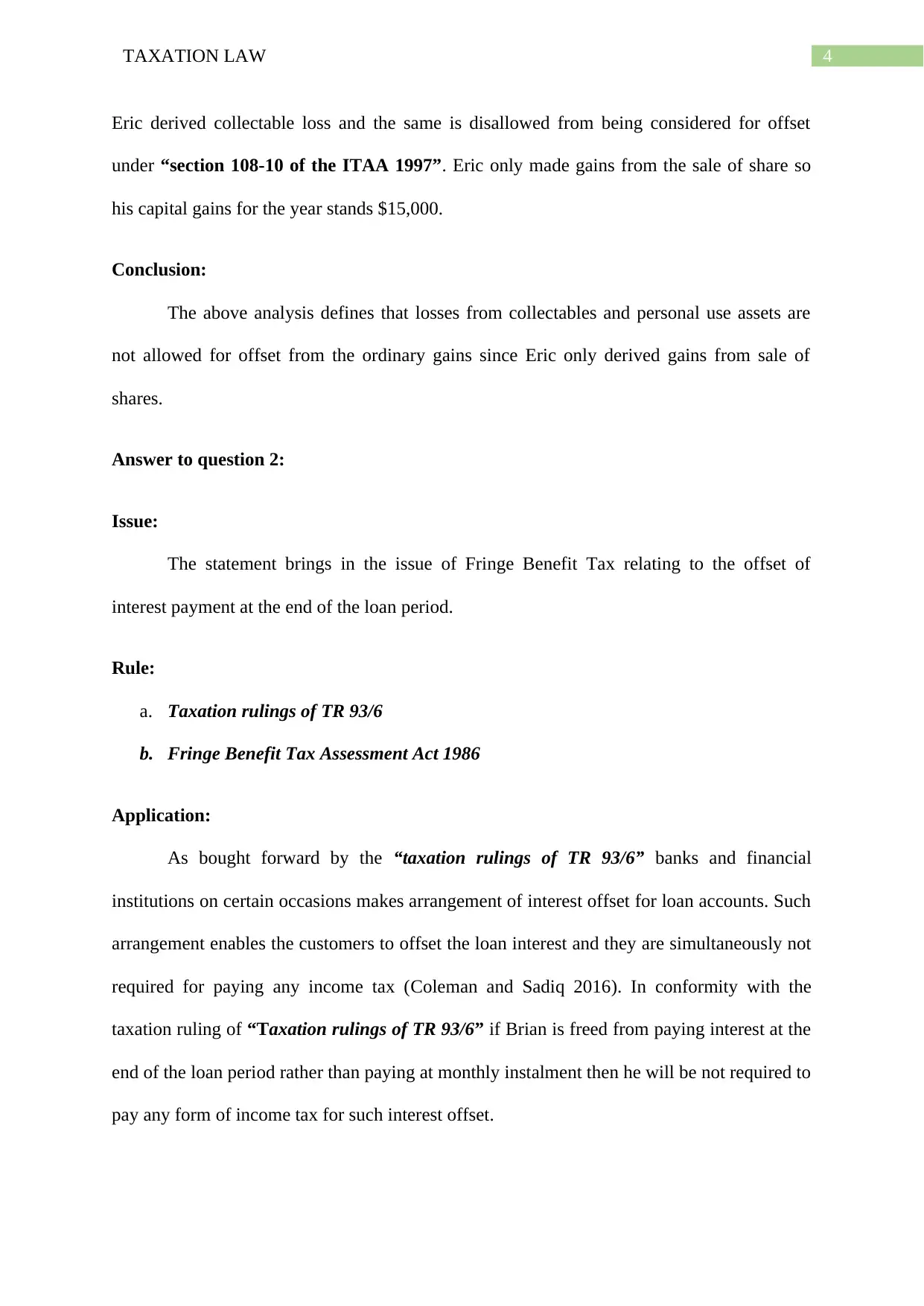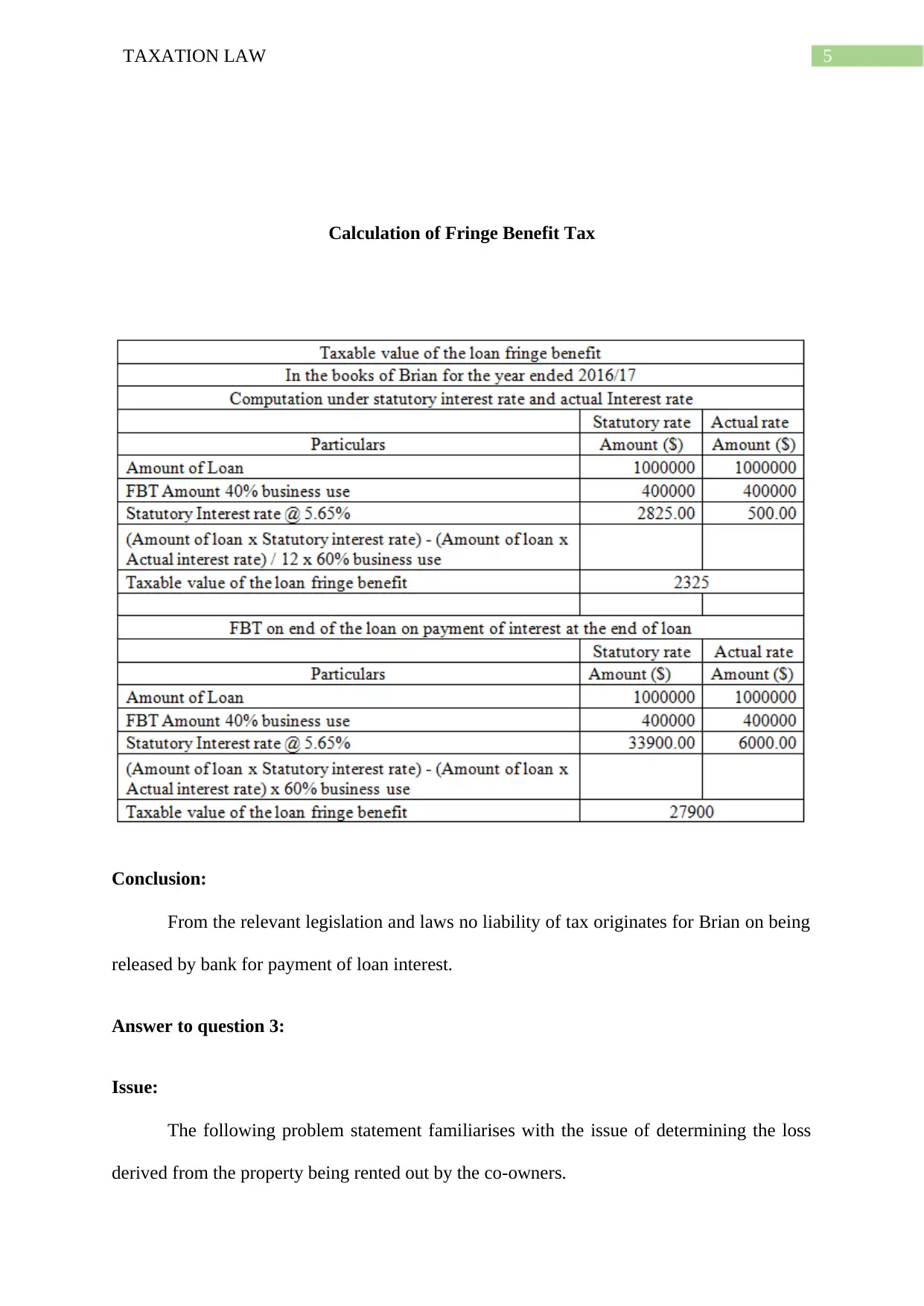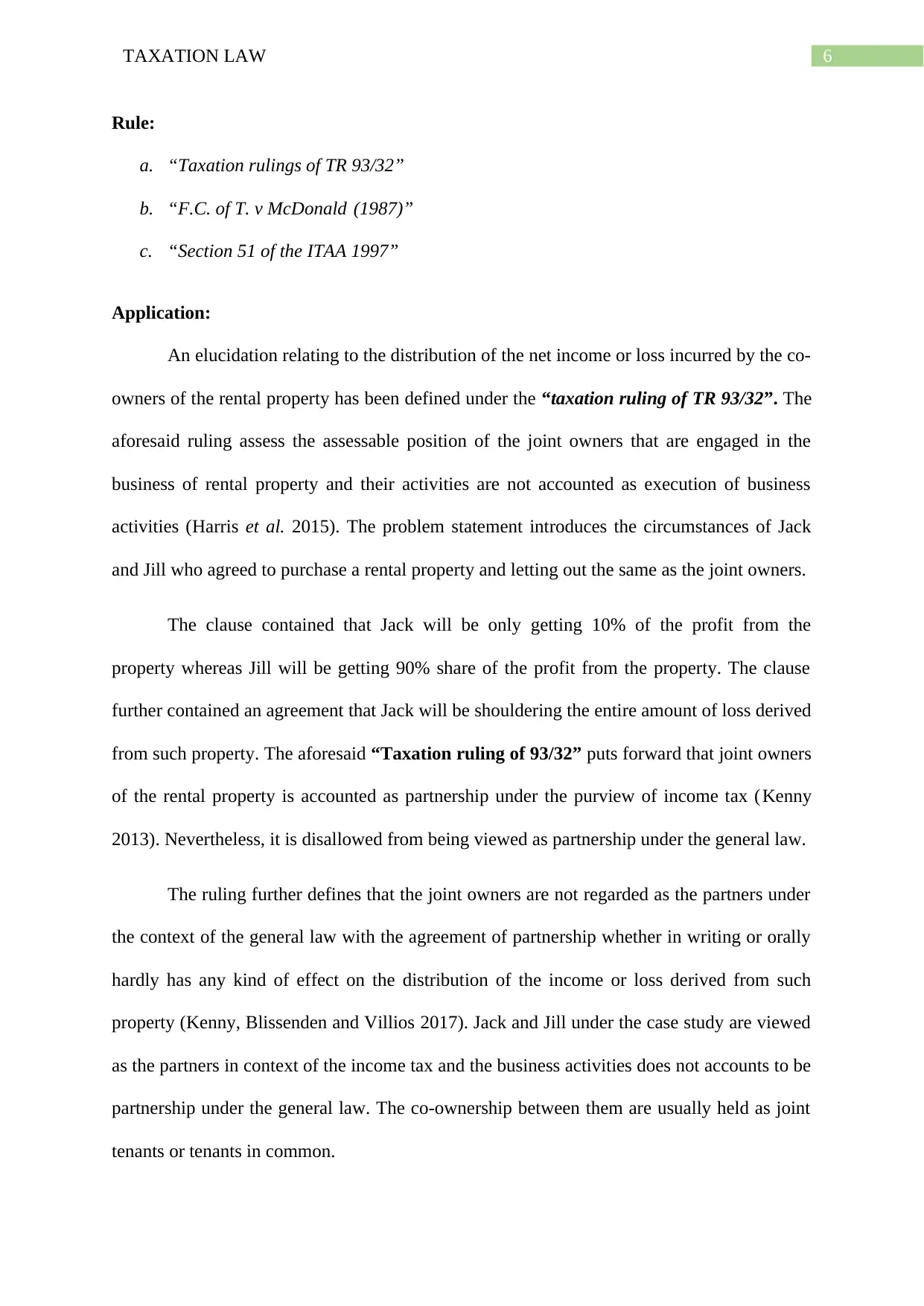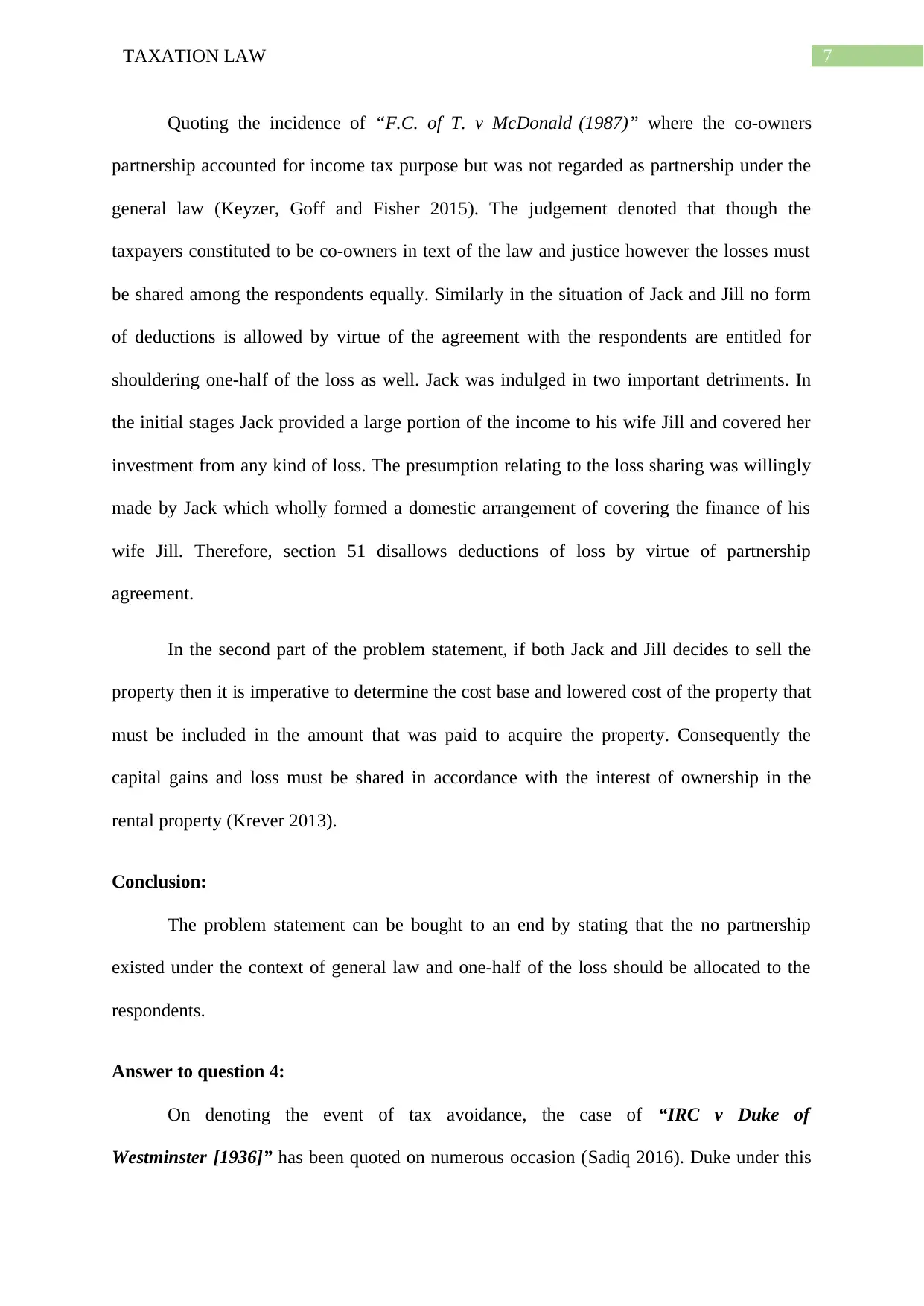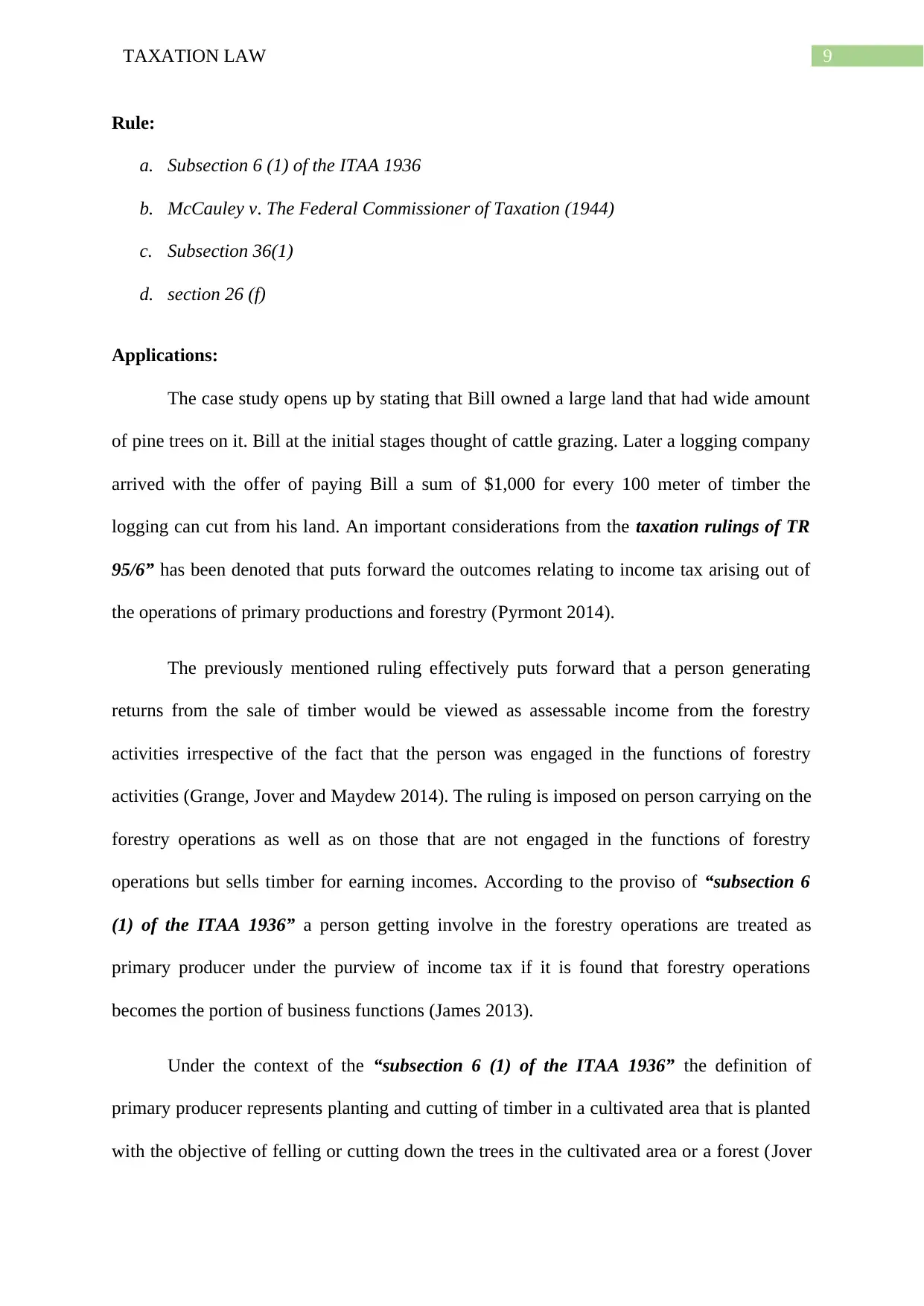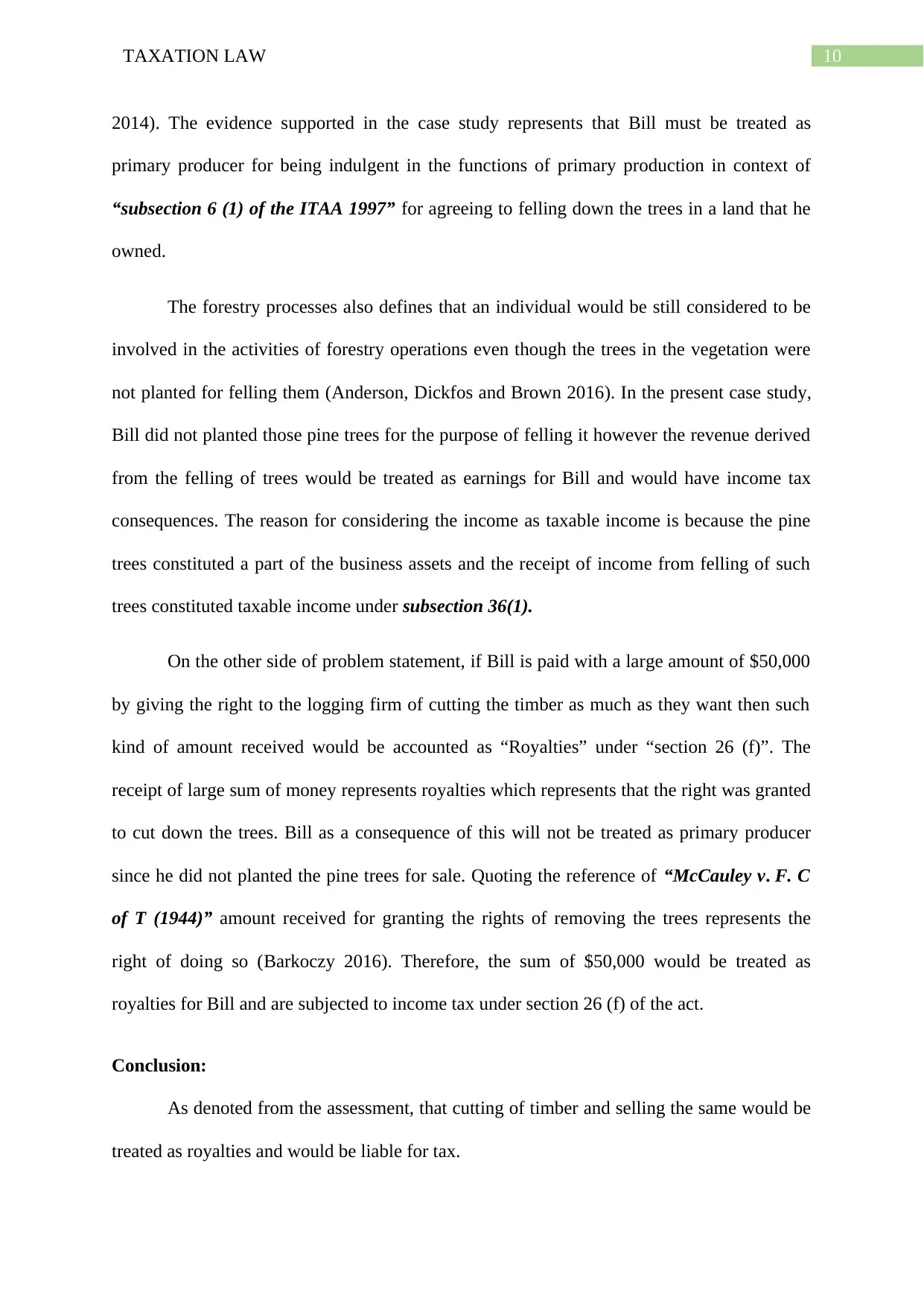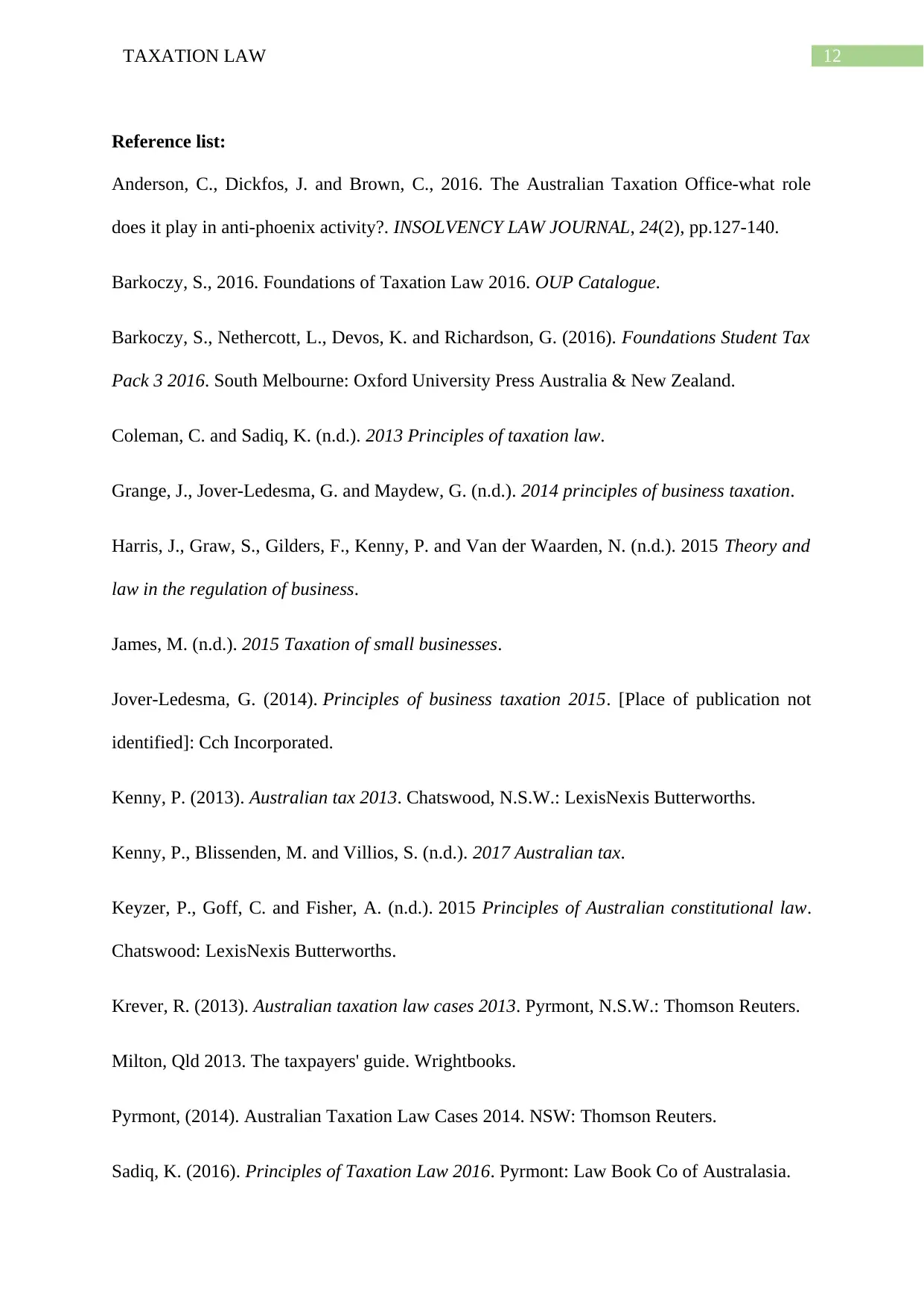The assignment discusses the income tax implications of a scenario where Bill owns a large land with pine trees, and a logging company offers to pay him $1,000 for every 100 meters of timber they cut from his land. The case study relies on taxation rulings, specifically TR 95/6, which states that returns from the sale of timber are assessable income from forestry activities, regardless of whether the person is engaged in forestry operations or not. According to subsection 6(1) of the ITAA 1936, Bill would be treated as a primary producer if he agrees to fell the trees on his land. If Bill receives a large sum of money for granting the right to cut down the trees, it would be considered royalties under section 26(f) and would not subject him to income tax as a primary producer.
![[object Object]](/_next/static/media/star-bottom.7253800d.svg)
![[object Object]](/_next/static/media/star-bottom.7253800d.svg)
